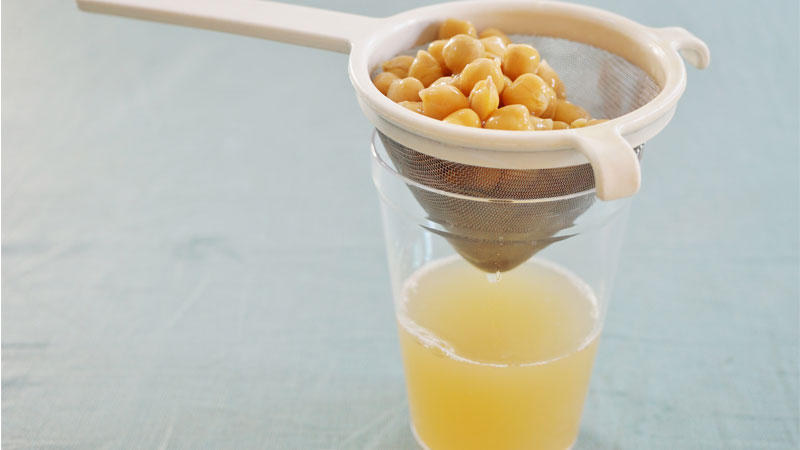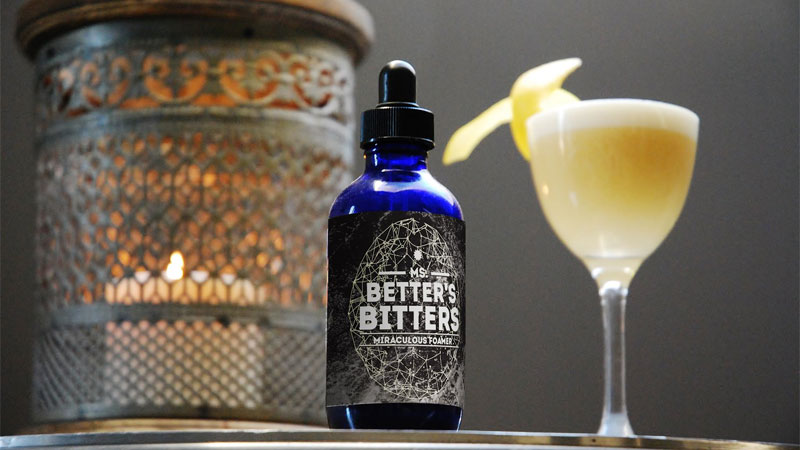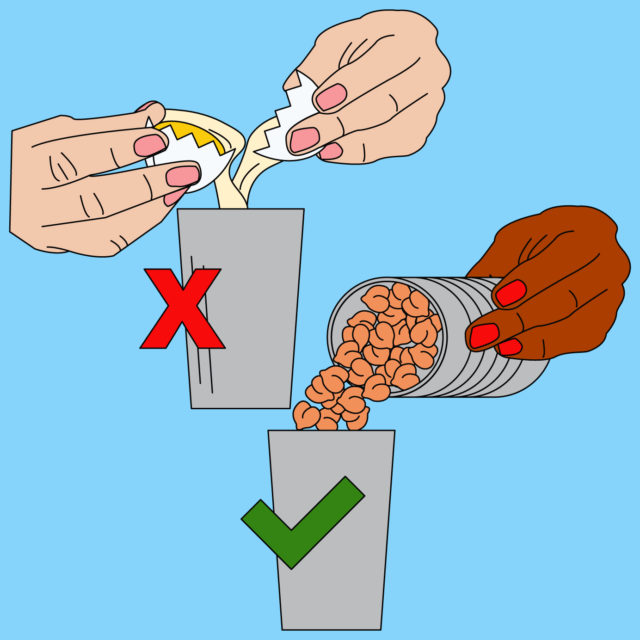Egg whites are commonly used in cocktails to lend a frothy, silky texture. But there are many reasons why you might want to omit the egg — perhaps you’re vegan, have an allergy, or you’re just a sucker for a good challenge. Either way, seasoned bartenders have some great tricks for creating foamy cocktails without egg whites.
“When we need an alternative to egg whites, we look to the viscous water in which legume seeds such as chickpeas have been cooked,” says Paul Taylor, the beverage manager of Columbia Room in Washington, D.C. This liquid is called aquafaba. It can be found in cans of chickpeas and has been a go-to replacement for egg whites in recent years. Taylor buys low- or no-sodium chickpeas and uses the liquid in the same proportion as the egg whites called for in the cocktail recipe (typically about an ounce). He builds the cocktail, and then mixes the ingredients using the same double-shake method with aquafaba that he does with egg- white cocktails, shaking first with two large ice cubes and then again with none.
Some bartenders have gone further in their quest for the perfect foamy topper. Mike Capoferri, an operating partner of Thunderbolt in Los Angeles, experimented with Arabic and xanthan gum as well as Versawhip, a soy-based product often used in molecular gastronomy to maintain foams, before landing on his method.
“We have a proprietary way we do it at the bar,” says Capoferri. “We have a syrup that we make that’s a blend of hydrocolloids.” Hydrocolloids are thickening gums or gels that add viscosity. He says the syrup gives sour cocktails a great foam without any of the off-putting smells that can come from egg whites or aquafaba. The concoction also has 50 brix of sugar, replacing the need for simple syrup.
Capoferri made the switch for a variety of reasons. He wanted vegans to be able to try all of Thunderbolt’s cocktails, but he also says that using egg whites and aquafaba are wasteful — what do you do with the surplus egg yolk and chickpeas? — and that the watery nature of both emulsifiers dilutes drinks too much. However, he concedes that his method at Thunderbolt is difficult to recreate at home.

Instead, for home bartenders, Capoferri recommends using a product like Fee Brothers Fee Foam. Ms. Better’s Bitters Miraculous Foamer, a Canadian product, is another worth seeking out.
If you want to go the DIY route, there are other options. “After switching to a vegan diet myself, foamy-textured cocktails were the first thing I wanted to tackle behind the bar,” says Omar YeeFoon, a co-founder of Shoals Sound & Service in Dallas. “I don’t usually like to use powdered solutions like Versawhip. Overly sciency drinks tend to taste less fresh to me.”
YeeFoon has had success with fresh-squeezed pineapple and orange juices. “[Pineapple juice] will naturally foam when agitated and adds texture even in non-tropical or tiki drinks,” he says. For cocktails with orange juice, he pulses the drink in a Vitamix and serves it long. “The result,” says YeeFoon, “is a nicely fluffy head.”

Another one of YeeFoon’s trick foaming ingredients is coffee, like in his Espresso Martini. “The oils in the espresso create a cascading foamy head similar to a well-poured Guinness,” he says.
YeeFoon uses aquafaba, too, but he’s also concerned about waste. At his bar, the team uses the chickpeas for hummus and any surplus bean water as a dairy substitute in aioli, which is then used as a base for many of their sauces.
Taylor at Columbia Room makes the most of aquafaba as well. “With a little elbow grease,” he says, “you can have some hummus to snack on alongside your delicious cocktail.”
